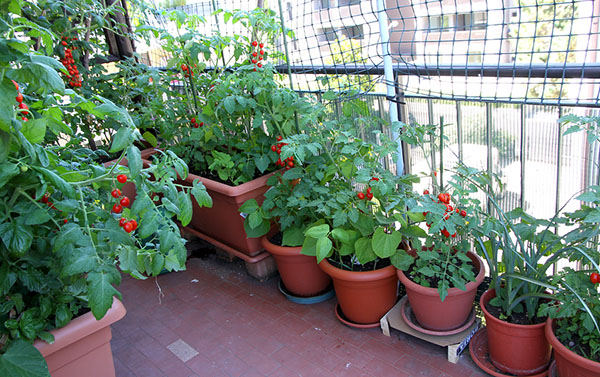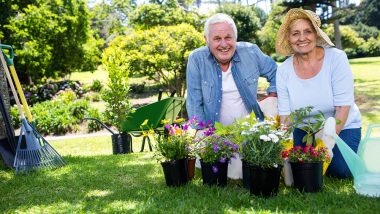Last updated on December 26th, 2024 at 12:00 pm
How to start a container garden. You will have to decide if you want to grow vegetables or flowering plants or maybe both.
Indoor and outdoor container gardening does require different gardening rules. There are some things you should know before you start buying plants, pots, soil, tools, and fertilizers. For one, you will need to know your gardening zone, climate, and the time of year when you should get started. In this post, we will talk about both indoor and outdoor container gardening. For your Gardening zone go here – Plant Hardiness Zone

Outdoor gardening with containers
An outdoor flowering garden or a vegetable garden? You can do both because, after all, it is your garden! There are some things to consider before doing both.
Containers are great for growing almost any type of plant whether they be vegetables, herbs, or flowers because they offer great versatility. Why? Because gardens in containers can easily be moved from one place to another. In and around the Southwest we know it gets extremely hot during the peak summer months. With container plants, you can easily move them to a shady spot for protection from sun exposure. Not so if you have a traditional in-the-ground garden!
Not only protection from the sun but you can temporarily move them indoors or to a safer area in case of inclement weather. But again there isn’t much you can do for the gardening bed…you’re pretty much at the mercy of Mother Nature.

It’s important to choose a good location for them. You’ll want to choose a place that has the proper amount of sun for the plants you wish to grow, but it also needs to be a place that’s very accessible and easy to get to. The closer to the back door of your home the better. Too far away and you might decide to skip the days of watering or fertilizing.
It’s also important to plant them as far away from streets or machinery as possible. Pollution from cars, as well as the dust and debris they kick up, can damage your plants and contaminate them. As stated earlier you can easily move them away from heavy pollution to an area that is conducive to healthy growth

Growing plants in containers outdoors do come with some challenges. You must water more often during the hot summer months. The sun rays will scorch the leaves and dry out the soil in the container plus your container retains heat, thus more heat. So, you will have to water almost daily. Fertilizing is also a concern. It is much easier to burn your plants due to too much fertilizer in a confined space. It’s best to fertilize at half the ratio of the recommended application.
Additionally, you follow the same rules for growing vegetables in containers outdoors. It is essential you have plenty of sunshine during the growing process. Another factor is your soil. It’s best to have good loamy potting soil for your outdoor plants.
In and around the southwest the best time to start a container garden is in early spring. Early March through early May.
How to start a container garden indoors

Choose ornamental plants that do well indoors. Below is a list of plants that will do well indoors.
- Succulents
- Sansevieria
- Pothos
- Lucky Bamboo
- Spider Plants
- Marginata
- Rubber Plant
- Money Tree
- Jade Plant
- Dracaena
- Ficus
If you have your plants indoors, you’ll need to be sure to select a very good spot. Most plants need to be in a fairly warm area, so it’s best to choose a warm spot in your house. If you have refrigerated air or a swamp cooler keep them away from those vents.
Many plants won’t do well in very chilly homes, so you might need to choose a room for your plants and keep the vent closed in that room so it stays warmer there. If you can, choose a sunny room with a lot of natural sunlight.
Plants thrive best in natural light. If you don’t have a room with a lot of sunlight, you’ll have to use special plant lights for your plants. You can’t use just any fluorescent light because plants won’t thrive and they won’t bloom as often.
You need to use lights that are specially designed for growing plants. They contain a broad spectrum of light, which is closer to natural light than standard bulbs. You may also have to adjust the humidity in the room with your plants.
Some plants thrive better in higher humidity, and others do well in lower humidity. You may need to invest in special equipment to adjust the humidity if you’re raising very delicate or picky plants. You probably won’t have to do this unless you’re growing exotic varieties. Plants that we mentioned above will do well with fluorescent or low window light.
Next, you’ll need to choose which plants you want to grow. Be careful! Too many people choose to plant far too many varieties and end up frustrated. Don’t grow anything you can easily pick up cheaply at the grocery store.
Vegetables that do well indoors.
- Tomatoes
- Carrots
- Cucumbers
- Kale
- Lettuce
- Mint
- Peppers
- Chives
You might think these plants are only good if you have a greenhouse. Actually, these plants will do well inside your home. You will need to place them in south or southwest facing a window. The more sun they get the better. For the beginner, gardener it’s best to grow vegetables that you really enjoy. It’s best to find them at your local nursery as opposed to grocery or convenience stores.
Tomatoes and peppers are my favorite vegetables because they are easy and fast-growing.
How to start a container garden
Type of soils to use in containers
Use a good potting soil or mix for your containers. Do not use straight composted soil as this type of soil might be a little too high in nitrogen. If you want to use composted soil mix it in with some topsoil or potting mix. About a 50/50 mix ratio.
Finally, decide whether or not you want to grow your plants organically. If you’re growing indoors, this will be very simple to do. But if you’re growing your plants outside, you may find the frustration of dealing with pests is just too much for you.
What about insects for indoor plants.
Yes, this is a big problem for many folks who want a garden indoors. Here are some organic insecticides that will work better than most harsh chemicals.
Neem oil works wonders for insects, fungus, and mites. It is an organic insecticide but it does require several applications before you get good results.
Garlic Barrier is another good organic spray. It does not kill insects but its pungent smell repels most insects.
Chile pepper insecticide spray Is another excellent repellent. You can use your own concoction or purchase these sprays at your local gardening store.
For more information on how to use these products follow this link Natural Insecticides.
You could start off small this way you can control and invest more time and money into organic gardening. Once you have the basics you could build a larger garden the following year. One year’s experience will help you get better results the next year.
Do you have any questions or comments? Please comment below.
How to start a Container Garden.

Greenhouse Manager, Master Gardener, and Webmaster.
If you have any questions or enjoyed this post, feel free to share your thoughts in the comments below.


